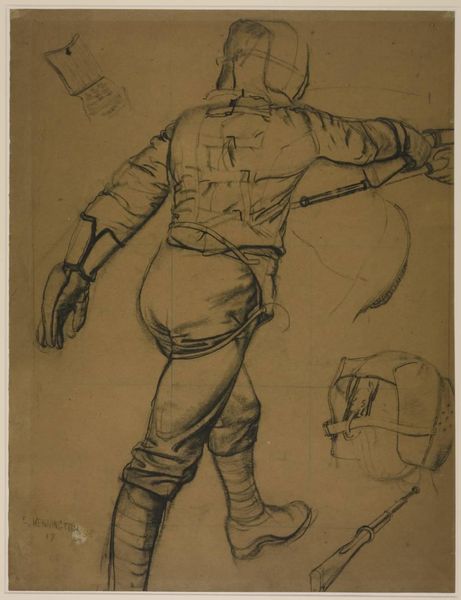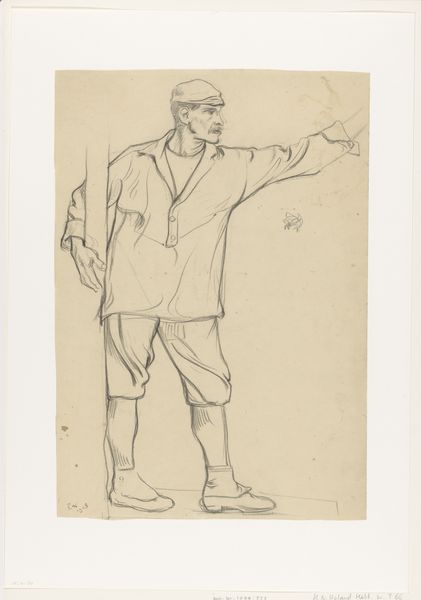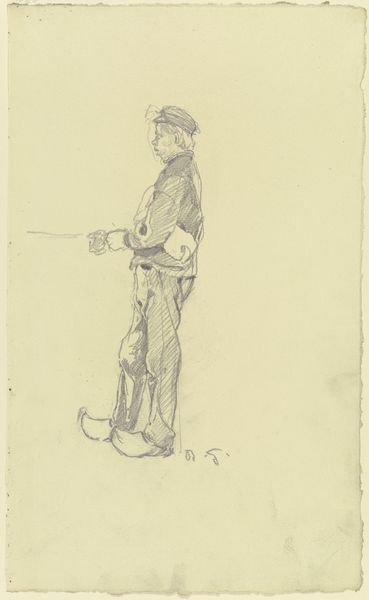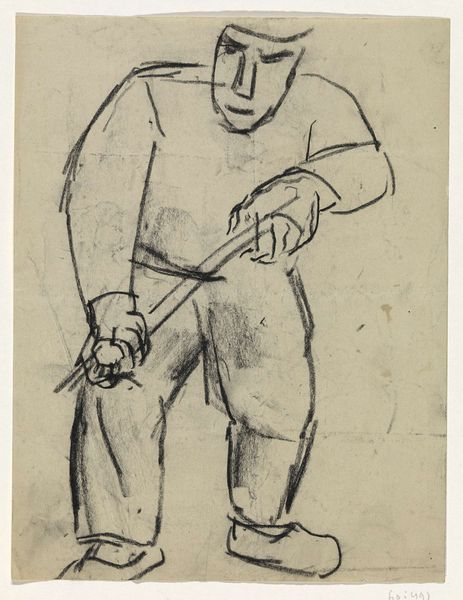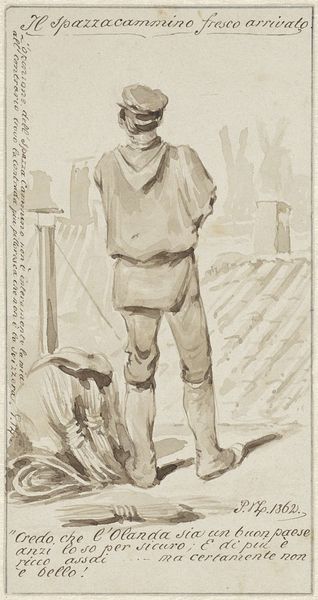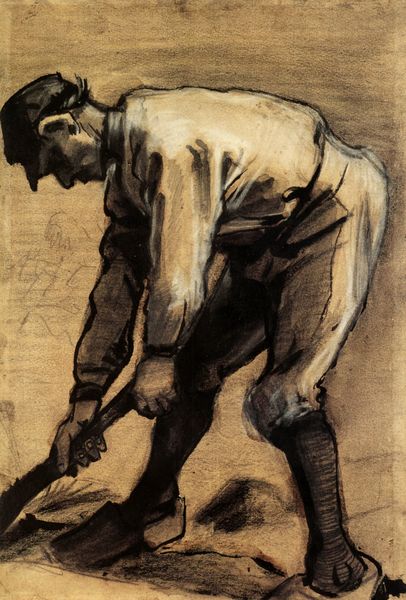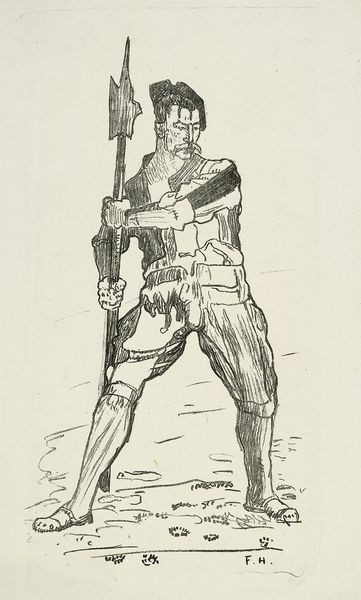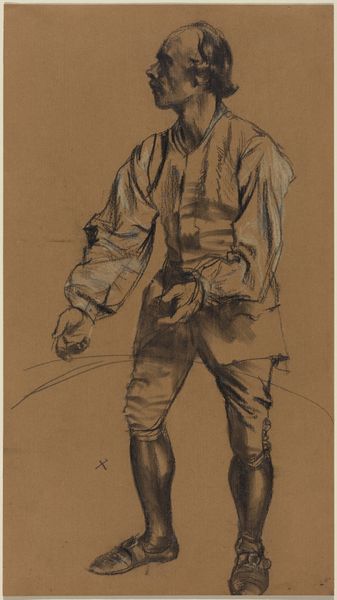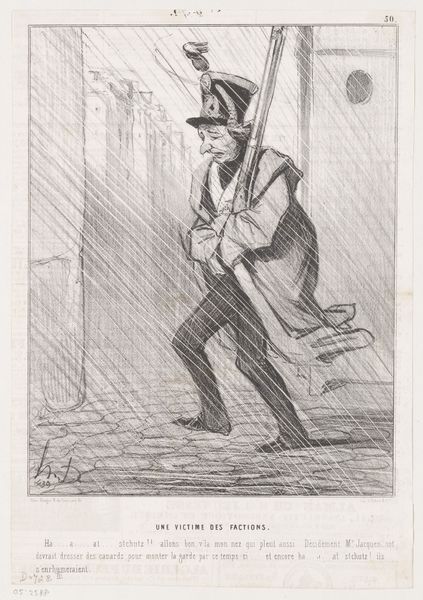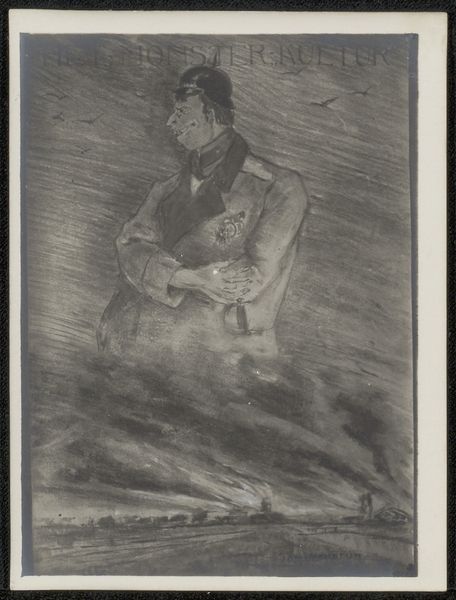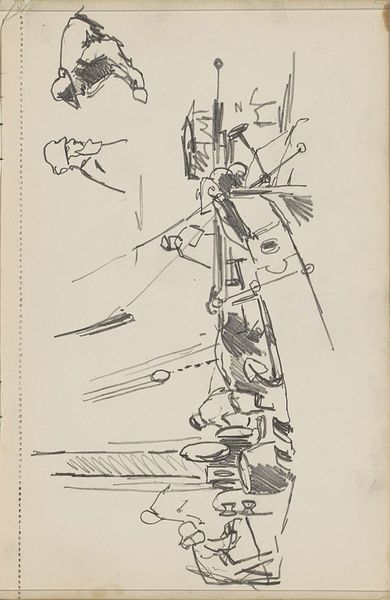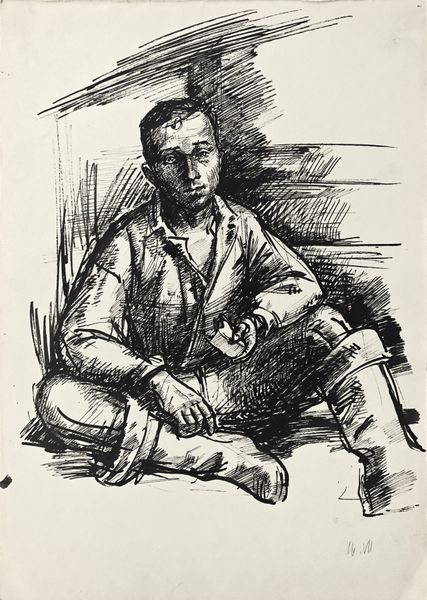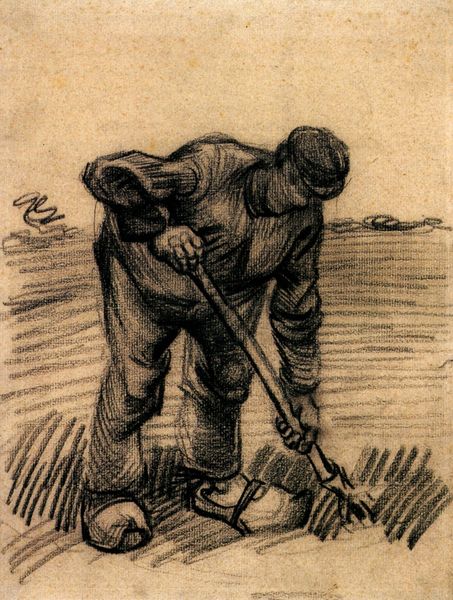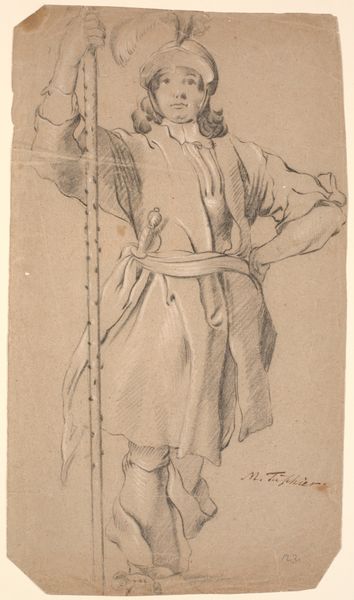
Grote Nationaalsocialistische soldaat die zich bedreigt voelt door een wandelende kleine Joodse man 1936
0:00
0:00
henkhenriet
Rijksmuseum
Dimensions: height 524 mm, width 300 mm
Copyright: Rijks Museum: Open Domain
Henk Henriët made this pencil drawing, titled "Great National Socialist Soldier Feeling Threatened by a Small Jewish Man Walking By," sometime during World War II. The work's power lies in its inverted power dynamic. The Nazi soldier looms large, but his face conveys fear, his stance is defensive, and he is precariously close to the edge. Henriët, living in the Netherlands under Nazi occupation, uses the visual codes of caricature to undermine the authority of the Nazi regime. His choice of scale and the inclusion of the swastika armband work to create a recognizable symbol of power, yet this symbol is stripped of its authority through Henriët's artistic choices. This image functions as a potent form of resistance, reflecting the social conditions of the Netherlands under occupation. By studying underground publications and personal accounts, we can better understand the courage and creativity of those who used art as a tool of defiance. The meaning of this work is contingent on its historical context, reminding us of art’s role in challenging oppressive social norms.
Comments
No comments
Be the first to comment and join the conversation on the ultimate creative platform.
